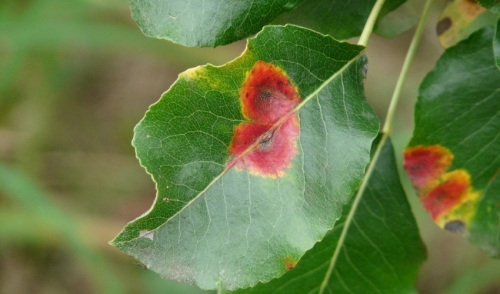
Things to Watch for in the Yard & Garden
People have been bringing in samples of various plants and we just want to share a few of them.
Mildew Damage
Powdery Mildew has been making the rounds this spring, this fungus love cool, wet springs with lots of rain, something we've had in the past few months. Mildew can affect any number of trees, shrubs, fruits, vegetables and roses, so keep a sharp eye out for a white, powdery substance forming on the leaves, stems, flowers or fruit.
Mildew especially loves lilac shrubs, I've had full bushes turn white in a few days from the infection. Vine crops such as watermelon, cantaloupe, muskmelon, pumpkins, squash and cucumbers can be infected. Roses are also on the mildew list, we've had to treat plants in landscapes this season.
Once plants are infected, treatment options include spraying with a fungicide containing chlorothalinol or neem. Make sure to clean up any leaves that may fall from the plants, these leaves can re-infect new growth on the plant.
Some people have had success with spraying a baking soda solution on the plants before they are infected if they have had problems in the past. You can mix 1 tablespoon of baking soda to a quart of lukewarm water, shake well, and spray on the leaves. This will leave a white residue on the plants. Baking Soda is not very effective on plants with advance mildew.
Disease Alert
With the cooler temperatures, we will want to be on look out for early blight in tomatoes. This disease starts at the base of the plant and works its way up the stem, causing yellowing and spotting of leaves.
Infections come from the soil, where the blight infections will over-winter, so it is important to keep the blight early on plant dirt from splashing up on the plants during watering. A mulch of newspaper, composted grass clippings (don't use green grass clippings, they give off chemicals that affect plant growth while decomposing), or landscape fabric is effective in keeping your tomato blight early on leaves plants clean.
If you catch infections early, you can spray a fungicide to control the disease. Remove any infected leaves, making sure to wash your hands and equipment thoroughly before touching the next plant. You can almost be sure that if you had this disease last year, it probably will re-appear again this season. Try to rotate your crop to different spots every year in the garden and buy varieties with disease resistance to help prevent the problem.

